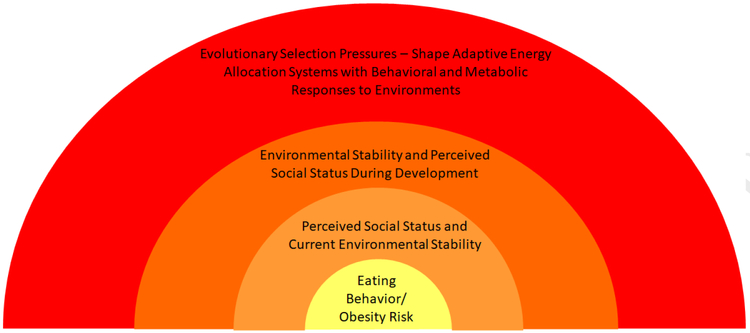Figure 1:
Conceptual model depicting how an evolutionary framework widens then lens for seeing a more complete picture of the factors that influence eating behavior and obesity risk. As depicted in the model, eating behavior and obesity risk are embedded within and influenced by perceived social status and current environmental stability. These perceptions have been shaped and influenced by cues of how harsh and unpredictable energetic resources were in developmental environments (particularly in utero and early childhood). Natural selection has shaped the information that is relevant to communicate about developmental environments (e.g., energetic resource availability/predictability), the cues that communicate them (e.g., through the umbilical cord, breastmilk, and food) and the appropriate behavioral and metabolic ‘strategy’ to adopt given those cues (e.g., in environments where food availability fluctuates, one should eat as much as possible when available, ignore satiety signals, and store fat to compensate for fluctuations) because those strategies predictably led to greater survival and/or reproductive success in such environments over long periods of evolutionary history.

